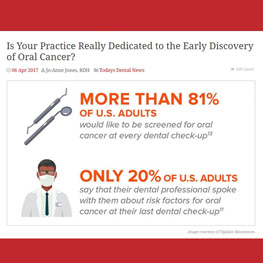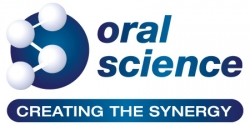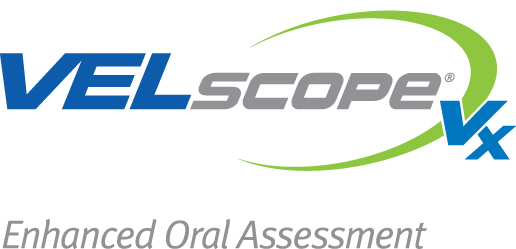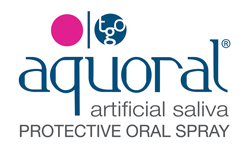06 Apr 2017 • Jo-Anne Jones, RDH • Todays Dental News
April is Oral Cancer Awareness Month, and dentistrytoday.com will be celebrating the event with blogs, news stories, and other features all spotlighting the disease. #OralCancerAwareness
April is Oral Cancer Awareness Month, a time when our attention turns to this insidious disease. Oral cancer claims one life every hour, 24 hours a day, 7 days a week, 12 months a year. In fact, the estimated number of new cancer cases of the oral cavity and pharynx will be close to 50,000 in 2017, claiming approximately 9,700 deaths—now 4 times higher than the incidence rate of cervical cancer and many other cancers that we seem to hear about more often.1
The fastest growing segment of the oral cancer and oropharyngeal cancer (OPC) population is largely driven by rising rates of a subset of cancers in the tongue, oropharynx, and tonsils associated with the human papillomavirus (HPV) infection. The Centers for Disease Control and Prevention states that HPV infection is so common that almost all sexually active American adults will have an infection at some point in their lifetime.2
Most people will clear the infection and may not even be aware they have been infected. If the individual has a healthy functioning immune system, the virus will be dealt with similarly to the common cold. The transformation from an infection to a malignancy is attributed to a persistent infection with a high-risk strain of HPV. The other historically known etiologic pathway for oral cancer is alcohol and tobacco products.
Are we making every attempt to discover oral cancer and OPC in its earliest possible stage? Statistics would clearly state an emphatic no when we consider that more than two thirds of oral cancers and OPCs are discovered in their later stages. This is primarily due to 2 reasons: the lack of opportunistic and effective screenings being performed on a routine basis, and the rising incidence of HPV-related OPCs, which pose a challenge due to posterior anatomical placement.
Screening Technologies
As mentioned and reflected in all my lectures, the provision of a thorough, effective visual and tactile extraoral and intraoral examination is of primary importance. Have the members of your clinical team taken a hands-on oral cancer screening course to update their skillset and knowledge of screenings to meet the needs of today’s population?
Are you using the best tools to magnify, illuminate, and access all possible areas of the oral cavity and oropharynx? Loupes provide us with the visual acuity that can make the difference between early discovery and missing something completely. A dedicated headlight provides the clinician with optimal illumination. Innovative design and a perfect marriage between magnification and illumination may be found in a product such as Orascoptic’s XV1, which is the first and only wireless loupe and headlight in one.
Speaking of comprehensive solutions, a new product to emerge on the American market is the Throat Scope. This all-in-one tongue depressor facilitates hundreds of oral assessments with the purchase of one handle and disposable blades. Throat Scope also allows one-handed retraction, depression of the tongue, and illumination at the site of examination.
Adjunctive technologies such as the VELscope Vx, Forward Science’s OralID, DentalEZ’s Identafi, DenMat’s ViziLite, and AdDent’s Bio/Screen are all screening devices, not diagnostic tools. A “screening” device cannot generate a “false positive.” The only true diagnostic capability is through the performance of a biopsy.
Yet practitioners should carefully evaluate screening devices before purchasing them. For example:
Is the device backed by device-specific research?
Does the device allow for seamless acquisition of images that may be kept on file for re-evaluation purposes or sent to a specialist for referral management?
Does the manufacturer provide comprehensive training on how to interpret findings? Training is critical for eliminating unnecessary and unwarranted specialist referrals.
Salivary diagnostics such as OralDNA from OralDNA Labs, exfoliative cytological evaluations such as OralCDx from CDx Diagnostics, and other emerging technologies all serve to add a further dimension to the evaluation of an abnormal lesion.
Know the Symptoms
HPV-related oropharyngeal cancer has an affinity for lymphoid tissues, presenting a further layer of complexity with clinical assessment. Are you and your clinical team aware of the subtle symptoms that often accompany HPV-related oropharyngeal squamous cell carcinoma (OPSCC) in the tonsillar area and toward the posterior base of the tongue? These lifesaving signs may include but are not limited to:
- Hoarseness
- Continuous sore throat (recurrent throat infections not responding to antibiotics, asymmetry in tonsillar area)
- Pain when swallowing or difficulty swallowing
- Pain when chewing
- Continual lymphadenopathy
- Nonhealing oral lesions
- Bleeding in the mouth or throat
- Unilateral ear pain
- A lump in the throat or the feeling that something is stuck in the throat
- Unexplained weight loss
- Slurred speech
- Tongue that tracks to one side when stuck out
Educational materials are available to provide additional information to our dental patients. We want to empower them to understand the importance of an annual oral cancer screening examination. We also want to prompt self-examination.
Screen all of your adult patients as if their lives depended on it. It just might!
Educational Resources
Fact Sheet & Quiz, Booklet, Early Detection Flyer and Video (click on “Oral Cancer”)
Oral Cancer Foundation “Oral Cancer Fact Sheet”
Oral Cancer Foundation professional products and brochures
CDC HPV facts and brochures
VELscope Vx “Join the Fight Program”
Overview of Oral Cancer
Six Step Screening Brochure
Hopkins Medicine HPV Brochure (free download)
Fakhry C, D’Souza G. Discussing the diagnosis of HPV-OSCC: common questions and answers. Oral Oncol. 2013;49:863-871.
References
American Cancer Society. Estimated number of new cancer cases and deaths by sex, US, 2017. Cancer Facts & Figures 2017. Atlanta, GA: American Cancer Society; 2017.
Centers for Disease Control and Prevention. Human Papillomavirus (HPV). https://www.cdc.gov/std/hpv/default.htm. Accessed March 30, 2017.
Ms. Jones is the president of RDH Connection Inc, an educational and clinical training company and has joined the 2017 Dentistry Today CE Leaders for the seventh consecutive year. In the midst of preparing to present her extensive research on HPV-related oropharyngeal cancer to her national association, she and her family were dealt a crushing blow with having a loved one diagnosed with late stage HPV-positive tonsillar cancer and losing her life to this disease 16 months later. She proudly partners with the Oral Cancer Foundation in conveying the urgent need for changing the way in which we screen for oral cancer to meet the needs of today’s population.
Disclosure: Ms. Jones is a KOL and consultant for Orascoptic and LED Dental, as well as an advisor and investor for Throat Scope.
Article used with permission and thanks to Dentistry Today. See more at Dentistry Today











